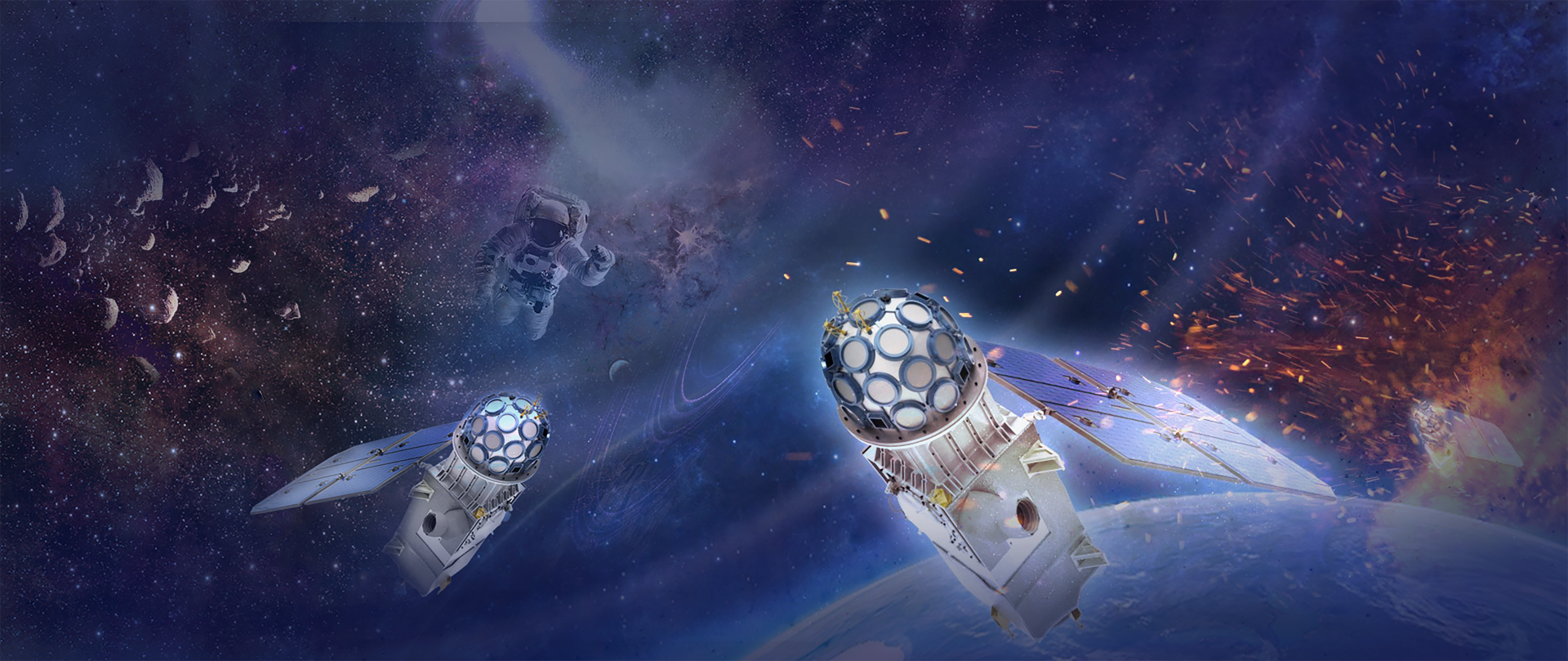

Gecam satellite diagram
Scientific exploration orbit: the orbit of the two satellites is the same, with the opposite phase, the orbit altitude is 600km, and the inclination angle is 29 °
Total mass of Double Star: no more than 360kg
Launch time: December 2020
Rocket: Solid Launch Vehicle
Satellite life: no less than 3 years
2. Scientific exploration payload
The payload system of gecam satellite is composed of gamma ray detector (GRD), charged particle detector (CPD), load processor and main structure of payload.
Among them, gamma ray detector (GRD) and charged particle detector (CPD) are scientific detection payloads.
Gamma ray detector (GRD): it adopts modular design, with 25 detector modules pointing to different directions respectively to achieve large field of view, good positioning ability and wide energy area coverage. It can realize 8 keV ~ 2 MeV gamma ray detection, measure the light variation and energy spectrum of gamma ray bursts, and locate the gamma ray bursts.
Charged particle detector (CPD): composed of eight charged particle detectors, it can identify space charged particle events and remove its interference to gravitational wave gamma storms.

Gecam scientific payload
Load processor: it is used to collect and process GRD and CPD signals, to trigger and locate GRD and CPD signals in orbit, and to transmit astronomical warning in quasi real time; to realize data storage, transmission and interaction with satellite platform.。

